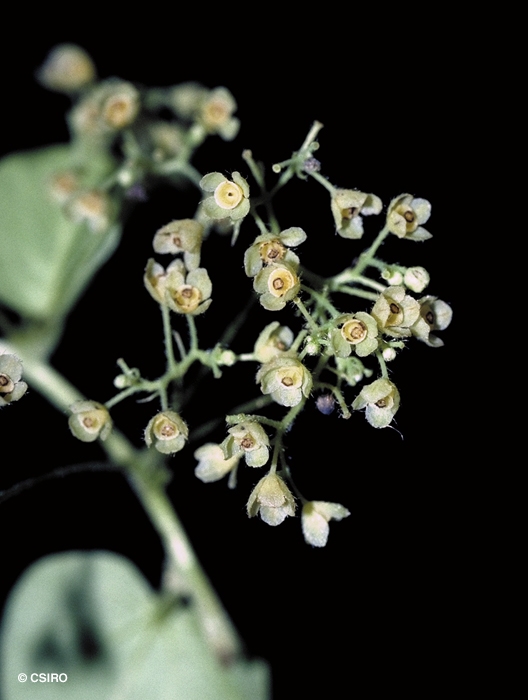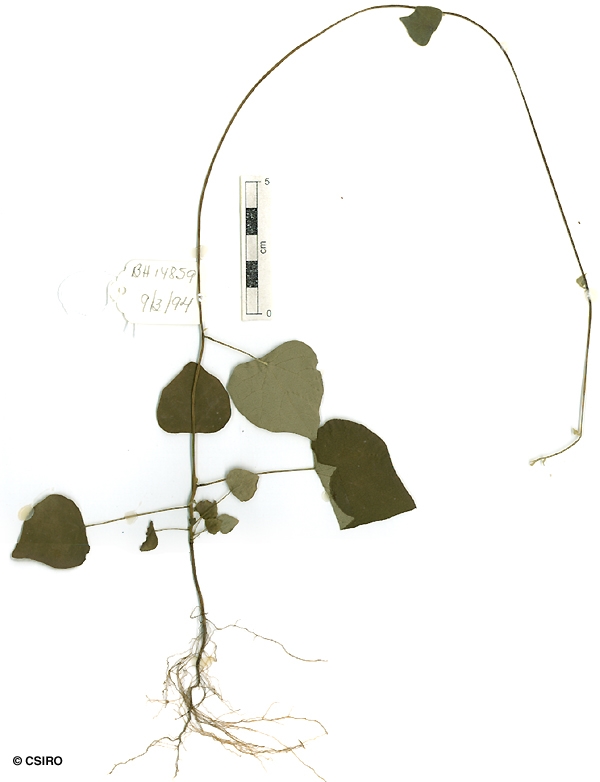Australian Tropical Rainforest Plants - Online edition
Cissampelos pareira var. hirsuta (Buch.-Ham. ex DC.) Forman





Forman, L.L. (1968) Kew Bulletin 22: 356.
Pareira Brava
A slender vine not exceeding a stem diameter of 2 cm.
Leaf blades about 7-12 x 6-12 cm, petioles about 4-8 cm long. Underside of the leaf blade much paler than the upper surface and densely clothed in pale hairs.
Inflorescence up to 10-13 cm long, hairy, a raceme of fascicles. Bracts large and conspicuous particularly towards the base of the inflorescence where they may be about 2 x 2 cm, while further up the inflorescence they are smaller. Male flowers: Flowers about 1-2 mm diam. Sepals obovate, about 1-2 mm long. Petals fused to form a cup-shaped corolla about 0.25-0.5 mm high. Anthers about 0.25 mm wide, fused together to form a staminal column. Female flowers: Each fascicle of flowers subtended by a large cordate, leaf-like bract up to 14 x 20 mm. Pedicels about 2 mm long. Sepals broadly obovate, about 1.5 x 1 mm. Petals broadly cuneate-obovate, about 1 x 1 mm. Ovaries (carpels) hairy, about 0.75 mm long. Stigma 3-lobed. Ovules 2.
Fruits globose or slightly laterally compressed, about 6 mm diam., densely clothed in short hairs. Fruits red when fully ripe. Seeds +/- horseshoe-shaped, about 4 mm diam., testa surface sculptured. Embryo U-shaped or horseshoe-shaped. Cotyledons about one third the total length of the embryo. Cotyledons about 2.5 mm long. Radicle about 5.5 mm long.
Cotyledons linear, about 10-15 x 1-2 mm, sessile. First pair of leaves ovate, triangular or cordate, often slightly peltate, petiole hairy. At the tenth leaf stage: leaf blade +/- cordate, peltate, venation palmate. Underside of the leaf blade clothed in pale prostrate hairs. Midrib slightly raised on the upper surface of the leaf blade. Terminal bud and stem clothed in pale +/- prostrate hairs. Seed germination time 136 to 167 days.
Occurs in CYP. Altitudinal range from near sea level to 50 m. Grows in monsoon forest or on the edge of gallery forest. Also occurs in Africa, Asia, Malesia and the Americas.
This species may have medicinal properties. It is thought to be a good diuretic.





